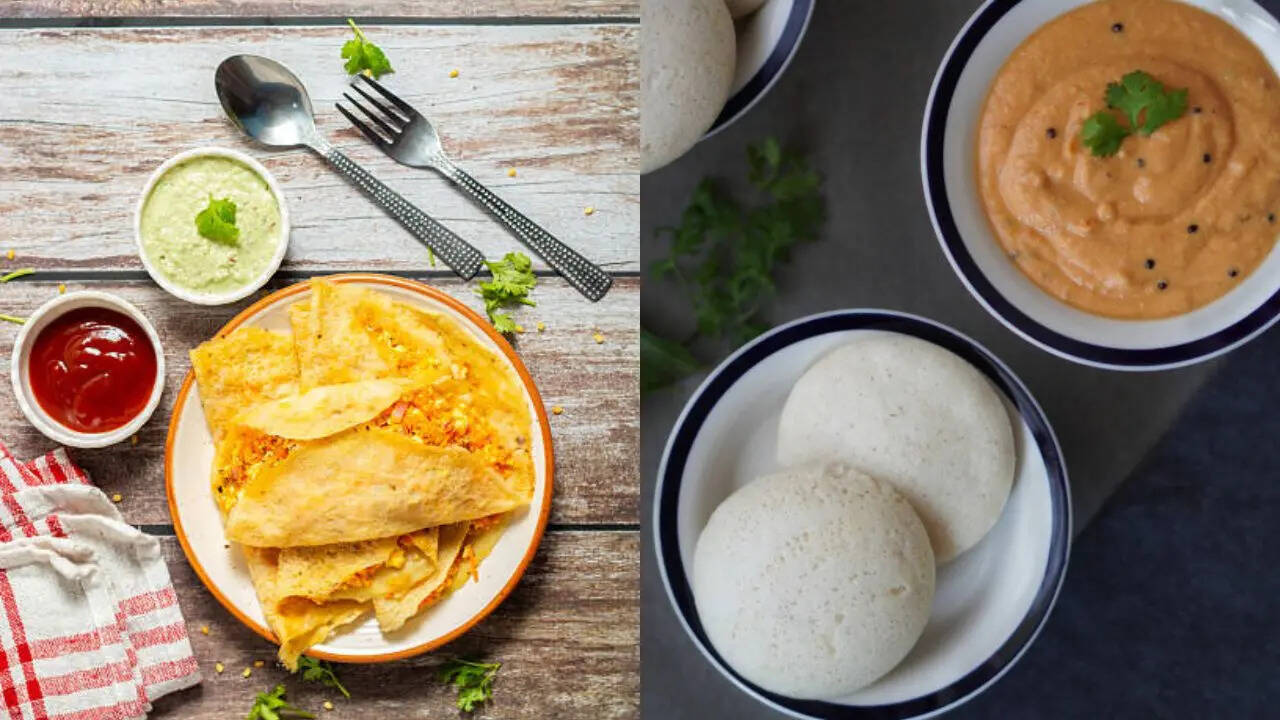Health
Idli vs. Moong Dal Chilla: Breakfast Choices Impact Weight Loss

Choosing the right breakfast can significantly influence your health and weight loss goals. Two popular options, idli and moong dal chilla, both offer unique nutritional benefits that can support a balanced diet. Understanding their differences can help you make informed decisions about your morning meal.
Nutrition Breakdown: Idli and Moong Dal Chilla
Idlis, a staple in Indian cuisine, are known for their light and fluffy texture. A plain idli contains approximately 40 calories and is primarily made from rice and urad dal. While they are low in fat, idlis are high in carbohydrates, which can lead to quicker digestion and subsequent hunger if consumed alone.
In contrast, a single moong dal chilla has around 120 to 130 calories. Although it appears to have more calories, it also provides a higher amount of protein and dietary fiber. These nutrients are crucial for maintaining satiety, helping to control hunger and reduce cravings throughout the day. For those focused on long-term weight loss, moong dal chilla is a superior choice due to its more balanced nutrient profile.
Satiety and Blood Sugar Regulation
When it comes to staying full longer, moong dal chilla takes the lead. Experts suggest that dal-based foods, like chilla, digest more slowly, effectively keeping hunger pangs at bay until lunchtime. Additionally, moong dal chilla helps regulate blood sugar levels, preventing spikes and crashes that can lead to unnecessary snacking.
Idlis, while easy to digest, have a high glycemic index. This means they can cause a rapid increase in blood sugar, particularly when consumed without accompaniments like sambar or chutney. If eaten alone, idlis may leave you feeling hungry sooner than expected.
Ultimately, for those aiming to lose weight effectively, moong dal chilla is the preferred breakfast option. Its combination of protein and fiber enhances feelings of fullness, making it an excellent choice for individuals following a calorie-controlled diet. Pairing chilla with low-calorie yogurt or mint chutney can further enhance both flavor and nutritional value.
To make idlis a healthier option, consider incorporating whole grains such as ragi or oats into the batter. This adjustment can not only lighten the dish but also improve its gut-friendly properties.
In conclusion, while both idli and moong dal chilla are nutritious breakfast choices, moong dal chilla offers superior benefits for weight management. By understanding the nutritional values and their impact on satiety and blood sugar, individuals can make informed decisions that align with their health goals.
-

 World5 months ago
World5 months agoSBI Announces QIP Floor Price at ₹811.05 Per Share
-

 Lifestyle5 months ago
Lifestyle5 months agoCept Unveils ₹3.1 Crore Urban Mobility Plan for Sustainable Growth
-

 Science4 months ago
Science4 months agoNew Blood Group Discovered in South Indian Woman at Rotary Centre
-

 World5 months ago
World5 months agoTorrential Rains Cause Flash Flooding in New York and New Jersey
-

 Top Stories5 months ago
Top Stories5 months agoKonkani Cultural Organisation to Host Pearl Jubilee in Abu Dhabi
-

 Sports4 months ago
Sports4 months agoBroad Advocates for Bowling Change Ahead of Final Test Against India
-

 Science5 months ago
Science5 months agoNothing Headphone 1 Review: A Bold Contender in Audio Design
-

 Top Stories5 months ago
Top Stories5 months agoAir India Crash Investigation Highlights Boeing Fuel Switch Concerns
-

 Business5 months ago
Business5 months agoIndian Stock Market Rebounds: Sensex and Nifty Rise After Four-Day Decline
-

 Sports4 months ago
Sports4 months agoCristian Totti Retires at 19: Pressure of Fame Takes Toll
-

 Politics5 months ago
Politics5 months agoAbandoned Doberman Finds New Home After Journey to Prague
-

 Top Stories5 months ago
Top Stories5 months agoPatna Bank Manager Abhishek Varun Found Dead in Well









